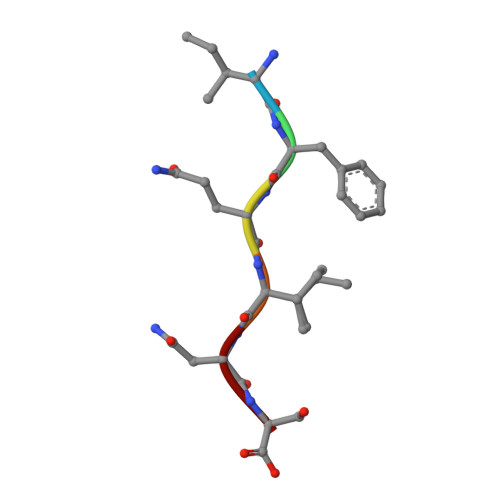Structure-based design of functional amyloid materials.
Li, D., Jones, E.M., Sawaya, M.R., Furukawa, H., Luo, F., Ivanova, M., Sievers, S.A., Wang, W., Yaghi, O.M., Liu, C., Eisenberg, D.S.(2014) J Am Chem Soc 136: 18044-18051
- PubMed: 25474758
- DOI: https://doi.org/10.1021/ja509648u
- Primary Citation of Related Structures:
4R0P, 4R0U, 4R0W - PubMed Abstract:
Amyloid fibers, once exclusively associated with disease, are acquiring utility as a class of biological nanomaterials. Here we introduce a method that utilizes the atomic structures of amyloid peptides, to design materials with versatile applications. As a model application, we designed amyloid fibers capable of capturing carbon dioxide from flue gas, to address the global problem of excess anthropogenic carbon dioxide. By measuring dynamic separation of carbon dioxide from nitrogen, we show that fibers with designed amino acid sequences double the carbon dioxide binding capacity of the previously reported fiber formed by VQIVYK from Tau protein. In a second application, we designed fibers that facilitate retroviral gene transfer. By measuring lentiviral transduction, we show that designed fibers exceed the efficiency of polybrene, a commonly used enhancer of transduction. The same procedures can be adapted to the design of countless other amyloid materials with a variety of properties and uses.
- UCLA-DOE Institute, and Department of Chemistry and Biochemistry, University of California , Los Angeles, California 90095, United States.
Organizational Affiliation:
















